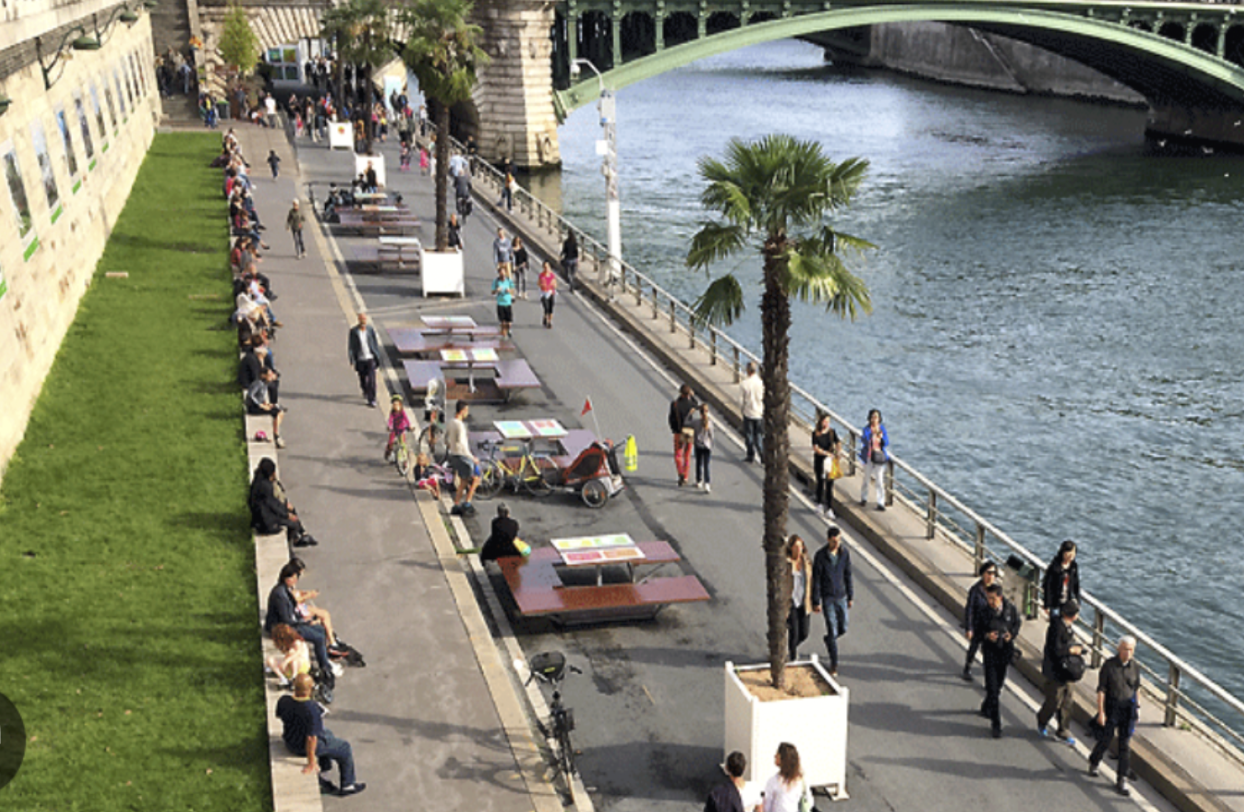Nurturing Nature in the Heart of Paris
Once an urban highway that was used by over 40,000 vehicles every day is now a space that spans more than 2 kilometers that is reserved for pedestrians. Starting from Pont de l’Alma to the Musée d’Orsay, Berges de Seine offers a relaxing green space for everyone to enjoy along with 5 floating islands, gardens, and restaurants. It may remind you of New York’s iconic High Line in a sense as it also has taken a great infrastructure and transformed it into a public space for leisure. On warmer days, it is the perfect place to go for a walk by the water or have a picnic with fresh baked goods from a boulangerie nearby.
The project to reshape the UNESCO World Heritage Site (since 1991) first started in 2002 with the image of a Paris Plage (Paris Beach), in mind. It was initiated as Paris had limited green spaces compared to the number of residents and other major cities like New York or London. It was also part of a greater attempt to improve air pollution and livability in the French capital, which was experiencing drastic shifts in climate conditions. Such changes including excessive heat waves and poor air quality thus contributed to a greater prioritization of green infrastructure and, consequently, the permanent installation of Berges de Seine.
This vast transformation has not only provided a place for pedestrians to enjoy nature in the midst of the busy city, but it also reflects how the city of Paris plans to combat the constantly evolving climate emergency. Paris has been experimenting with building more floating parks, which could be a potential site for habitat. Having replaced a disruptive, polluting highway, Berges de Seine improves the overall quality of life for both residents and visitors. It has also helped the re-establishment of aquatic plants and the return of fish of various species, with 20 species of fish widely represented and 10 more rare, compared to that of 4 species found in the Seine 50 years ago.
When speaking with Gabriel Wick, a renowned historian, curator, and architecture professor, who has lived in Paris for the last 16 years, he claimed to have noticed more green spaces and greenery initiatives than before. He has seen more rich, heavy plantings in the middle of the city, several parking spaces being transformed into linear parks, and an addition of multiple bike lanes. Wick argues that the city’s growing incorporation of green spaces such as urban forests and linear parks has proven architecture to increasingly evolve with the ever-changing climate and residential needs.
What started as a program to reclaim road space from private vehicles has now grown into a citywide agenda for remodeling the city of Paris into a greener, more accessible city to many. It has also worked towards improving the lives of the working class by providing more leisure spaces and enhancing the overall living conditions of the city. A transformation like that of Berges de Seine conveys the paramount importance of architecture’s role in fostering sustainability as urban cities increasingly face climate change and, thus, tackle social justice challenges altogether.




